UPDATE
I see that lots of people find my question too long (because there is lots to explain), read the first sentence and then just think that I'm going on the worst tangent possible without seeing the entire question. If the question isn't clear enough please let me know. I'm trying to condense it in the simplest way and not to cause any confusion.
The reason for the public key decryption is to achieve a form of digital signing where the recipient decrypts the encrypted content to reveal a hash value. I didn't see the need to mention this in the question as I wanted to find out how to perform this operation in its basic form. However to avoid any further concerns and warnings around what RSA is all about and that public key decryption is bad, I updated my question with that disclaimer.
BACKGROUND
I have written a C# application that uses the Chilkat's RSA library to take content and encrypt it using a personal Private Key.
Then I would like to use a public website to allow someone to decrypt that very content (that's encrypted) by using an associated public key.
Now, I found a 3rd party website (and there are not a lot of them, BTW) that allows you to decrypt content using a RSA public key (https://www.devglan.com/online-tools/rsa-encryption-decryption).
Unfortunately when I try to use it, I get a "Decrypt error".
Here is a sample setup. I have generated my own personal Public & Private Key pairs. In my C# application, I'm taking a string and encrypting it with a private key and encoding it using Base64.
const string originalContent = "This !s original c0nt3nt";
var rsa = new Chilkat.Rsa();
rsa.GenerateKey(2048);
var encryptedBytes = rsa.EncryptBytes(Encoding.UTF8.GetBytes(originalContent), true);
var encryptedEncodedString = Convert.ToBase64String(encryptedBytes);
Console.WriteLine($"Encrypted:{Environment.NewLine}{encryptedEncodedString}");
Console.WriteLine();
var privateKeyBytes = rsa.ExportPrivateKeyObj().GetPkcs8();
var privateKeyEncodedString = Convert.ToBase64String(privateKeyBytes);
Console.WriteLine($"Private Key:{Environment.NewLine}{privateKeyEncodedString}");
Console.WriteLine();
var publicKeyBytes = rsa.ExportPublicKeyObj().GetDer(false);
var publicKeyEncodedString = Convert.ToBase64String(publicKeyBytes);
Console.WriteLine($"Public Key:{Environment.NewLine}{publicKeyEncodedString}");
Console.WriteLine();
var decyptedContentBytes = rsa.DecryptBytes(encryptedBytes, false);
var decryptedContentString = Encoding.UTF8.GetString(decyptedContentBytes);
Console.WriteLine($"Decrypted:{Environment.NewLine}{decryptedContentString}");
Console.WriteLine();
Console.WriteLine("Press ENTER to quit");
Console.ReadLine();
This sample console app will write out all the necessary information needed to use for the next part of the process and to demonstrate that in principle it works as expected.
Here are the sample values from the console window:
ENCRYPTED CONTENT
H5JTsGhune1n3WWSPjwVJuUwp70Hsh1Ojaa0NFCVyq0qMjVPMxnknexOG/+HZDrIYsZM7EnPulpmihJk4QyLM8T2KNQIhbWuMHvzgHYlcPJdXpGZhAxwfklL4HP0iRUUXJBsJcS/2XoUDZ6elUoMIFY9cDB4O+WFxKS/5vzLEukTLbQ3aEBNg3xaf9fg12F8LcMxZ3GDsk0W9b6oJci09NTxXd6KKes0RM1hnOhw6bu0U33ZLF3sa0nH9Kdf8w23PoKc/tl12Jsa8N1A4OjaT5910UF8FRH6OkAbNKnxqXcL7+V4HVuHchi3ghuFivAW57boLeHr7OG7wOEC/gfPOw==
PRIVATE KEY
MIIEvgIBADANBgkqhkiG9w0BAQEFAASCBKgwggSkAgEAAoIBAQC8xYcNXckXf1X4Kd6qE5c7pddfWdKo71mcwZWskuaq+wq3FTcCTAedo/Vcx8Vxn+RMn5XE7QCDzcAAN0K/BzQsoU81myRzZ+bKP+TJ5HH0jClCUMj+ideEm0fay873jnbG0hKEOJPVxPWwKq3jvDLLmWrdgvd/UiDStDm286SFKfMlLWkSw8YIc5nXsthAgP0hv8Nj7UDKvTEG5o3boTuhG1JQARCEXP0fTdIiv0cEFlSN3KkgF4KDf32Vt2x57N/+PJXpQvcECkLwPpBAq/aM0qbtgeiILxavfBJRwQ5zXDUmZHepvSjK6KIYQsTavQQLDXnFKuXa2fxOJHIlys6pAgMBAAECggEBAI0ZMBtDkL2phj7aPP7vaclB6rvwzc9MKLVM1W2K2DPRNW8nwlhLMB4aoZnaELEfjGvhlPb/F7VtIyiGJbPX1J3PbP9qmVJRxWZDX+WwhaT+5xAUhkgMDDWoQ4s9b9QGfq2Z9BE0oPvWHraxEAz7bRRV9lTgQdK/Np2H7OPdNYn6SW8qVgAukgTBqVno4VDbC34bJwal0e63oBFFfensWlhPtDUQB/uQX7UiRfEkxL+CNuqVLDoAeXWmSVWOPlDTKVu1y1bzfA+WMOKHm1ndq21I07TUPf9FcgYdKf4yKpWvMfVeDev6Oo/2mlac+vrJO571S+h4a5m79jUhCeJwX4kCgYEA7q5hrNtMbErA6dgEOG+KpFTaeqbknwtcykVApEvHt4LKULedAvwkORu65acKFYkxbMt19Fx7ligGxg0yOQRWX1BXK1XOCo9eYOjvOVlbRqBywLIbegehoZQ0LoSsdRcOvFq7EbMV3BaxCmxgpnrCZ75VaCYUMzylIduPWKeT9xcCgYEAyngNIIgsXfpCI+HHILNpprFfS2JBBGPx8N/d9cXahKCJhxrMe8K64CSMyxTwum5DXjJnbE4QBsoowRZTCEF6JUBagRM/pQrVX/CK//oyUUaa5+1S/0OxlUevXR7TD6gcpGNEdPjruc+gZzhfKFuWh+V9mJQUviqm3RjAcEdHAD8CgYBL0kOfGM8vO5QK9R9qGiztxTLecbQAvihM7TD6wEQCjN7eQ2Xyc8zCA4gcujKe4sU7rWqcJODxs2drdPe2WyVhA/GdB5X7js3JdVXBXxx61C9//VRzMIds/9qPyH/MdnWs6hmxJrXUA7Vb/U+6sxacxD73ZdlW6XX/ynLAFAQSIwKBgQCk4i12j87p3ZMdW5HprJJeoNYFMwfVxnrSec1tiGoTVhWJxCZAp22+eaV7ARumB4OvY4bcKZpdnSahUEfgUkphqc3Kjd1nz7HCxsa7/YoarFAcjiXoIb2t30oNoLurZXGl4f1u8QQvNsnfJYZA/I1TMG4e4oEd+OgY6D5XcYR9ywKBgGdaZmoBieiw0NkbijjgQZ0WILDmrIYdsSp4HMp6XDeVvdMb/qYg2jTnvVyqMSb8NdfCOB0GT19r1isQX9RnUgxPikJbVLj8WjAQjHT28mtmRn+Ju/3KT75RJ/LHY3SySNMOgTW75X2u8v0ELdEiiOmc/vTkCYoS/oqp92ELjT1Y
PUBLIC KEY
MIIBIjANBgkqhkiG9w0BAQEFAAOCAQ8AMIIBCgKCAQEAvMWHDV3JF39V+CneqhOXO6XXX1nSqO9ZnMGVrJLmqvsKtxU3AkwHnaP1XMfFcZ/kTJ+VxO0Ag83AADdCvwc0LKFPNZskc2fmyj/kyeRx9IwpQlDI/onXhJtH2svO9452xtIShDiT1cT1sCqt47wyy5lq3YL3f1Ig0rQ5tvOkhSnzJS1pEsPGCHOZ17LYQID9Ib/DY+1Ayr0xBuaN26E7oRtSUAEQhFz9H03SIr9HBBZUjdypIBeCg399lbdseezf/jyV6UL3BApC8D6QQKv2jNKm7YHoiC8Wr3wSUcEOc1w1JmR3qb0oyuiiGELE2r0ECw15xSrl2tn8TiRyJcrOqQIDAQAB
WEBSITE PUBLIC KEY DECRYPTION ATTEMPT
Now, when I go to the website (mentioned above) I paste in my encrypted content in the encrypted content text block and I paste my public key that I generated in the text block underneath it and set the RSA Key Type to Public Key. But it fails.
SECOND ATTEMPT
But...
I have done some troubleshooting by taking my personal Private & Public keys that I generated and I use the website to perform the encryption & decryption with my keys and I'm able to encrypt my string and decrypt that encrypted content successfully which leads me to believe that somehow my Chilkat encryption setup is not fully aligned with the one that the website uses.
WHAT I NOTICED
So I started reading what the website had to offer and the author of the page posted an explanation on how to accomplish this (https://www.devglan.com/java8/rsa-encryption-decryption-java) which uses the Java RSA libraries under the hood. Apparently, there are two Java RSA ciphers that can be used "RSA" and "RSA/ECB/PKCS1Padding".
I am not so familiar with the Java libs and I know enough of cryptography to know how to get things done but there are lots of technical aspects that are still unclear to me as to help me figure out where to go next.
QUESTION
My question is, is there anything in Chilkat that I need to setup so that it can encrypt content that would allow a Java application (like the website link posted above) to be able to decrypt? (of course Chilkat needs to be able to decrypt it as well)


